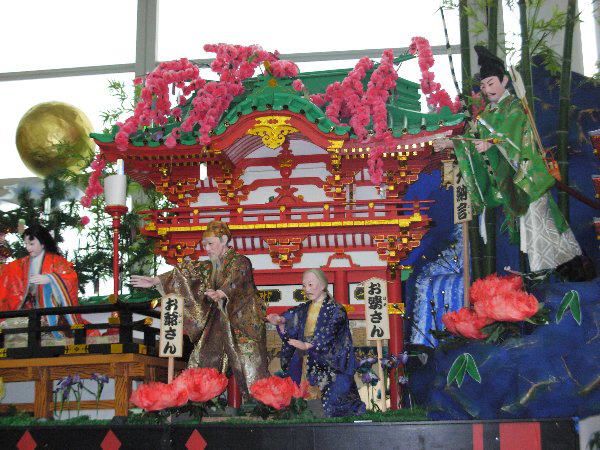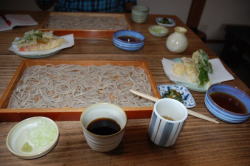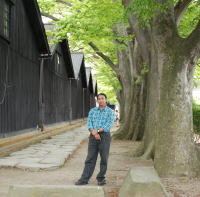084.Shinjo city in Yamagata, traditional festival and local specialty Soba

|
|
| archives 102 | digital walking | english | |
|
|
|||
| home | old home | table | |||
|
|
|||||
084.Shinjo city in Yamagata, traditional festival and local specialty Soba |
||||
 |
||||
There are many brilliant floats that parade cheerily on the main street of Shinjo city in Yamagata prefecture. It livens up native people spending their times in transient summer season of the northern Japan. So far I have visited this town several times, and I used to have a friendly feeling to this local mountainous town. Besides, I have another reason I love this town. That’s where this town was my colleague’s hometown when I was working in Kyushu region a long time ago. Although I’m not in correspondence with him very often now, I can remember that usually his spoken language was mixed with the Yamagata dialect among being full with the Kansai-ben western dialect and it made me feel sort of nostalgia. We from eastern were just two persons in there. This time I visit Shinjo with Babu-san who is my English teacher. Usually our each standing is teacher and student, but sometimes it turns into friendly relation between Babu-san and me through making our trip like this. I often hear that Babu-san’s favorite food is the Japanese Soba. But I’m not sure if he actually could catch the genuine flavor of Soba. Maybe his efforts of understanding for Japan let him mention that. Anyway he always says it is simple and delicious. I have a few times tried going Soba shop with Babu-san and I noticed that his manners were just a little different from Japanese in there. He wants to know something about Soba served us and showers questions one after another on that. If it comes to the matter that is out of my hand, his interest turns to the waitress working busily there. At first it starts with easy question to reply. For instance what kind of the ingredients this vegetable attached as spice is. The waitress used to respond right away while giving her services to other visitors. But when it’s getting complicated, she has to make sure of her story with someone else. Finally the shop master appears in front of our table wearing white colored working clothes. I think this is the sight where Japanese people customarily seem to be very kind to foreigners. While replying to us, he is gradually conscious of pride as a craftsman and politely begins to talk about his profound knowledge of making soba food. In this town, we could visit the soba shop where stick to mixture ratio of the soba and wheat. As stated above,the white robe comes out and insist enthusiastically that his soba must be in the ratio of 10 to 1 as a result of his research for a long time. I’m used to the soba mixed 8 to 2 called Ni-Hachi soba in Japanese, but I never tried 10 to 1 soba called Toh-ichi soba. I asked shop master how your research reached there. He explained the details to us but I couldn’t understand the reasons he mentioned. What about Babu-san? If he couldn’t catch the answer, I believe that it wasn’t my poor translation but difficulties of the master’s explanation. At any rate, the Toh-ichi soba was delicious. There are a lot more differences on manners between us. Even if it’s in case of soba, he needs some sweets for dessert after meal. In that day, we had the soba-manju stuffed with sweetened red beans paste. |
 |
 |
|
|
| home | old home | table |